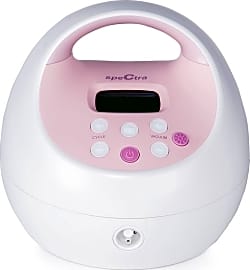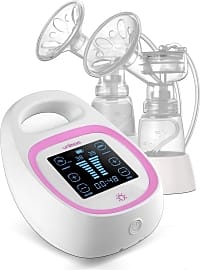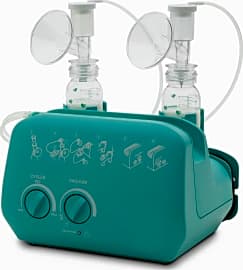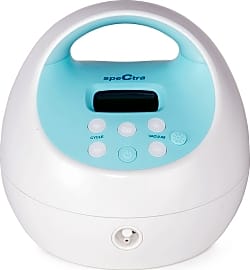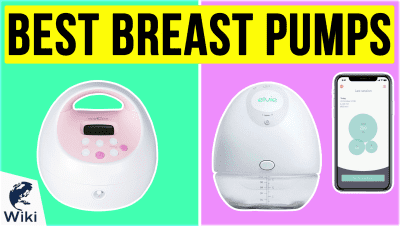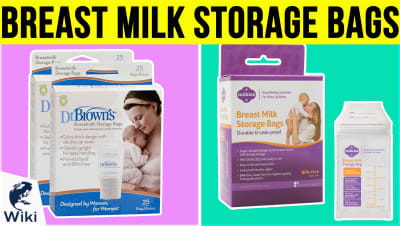The 7 Best Hospital Grade Breast Pumps

This wiki has been updated 42 times since it was first published in April of 2015. We all know that the best food newborn babies can get is their own mothers' milk. But feeding time does not always come at a convenient moment or location. These hospital grade breast pumps are all high-end models that will allow new parents to always have a bottle of the good stuff on hand, and we've ranked them here by their suction power, hygienic safety, ease of use, and portability. When users buy our independently chosen editorial picks, we may earn commissions to help fund the Wiki.
Editor's Notes
August 10, 2020:
While there have been some exciting innovations in the breast pump sector, the bulk of those have been targeted at portability, creating models that couldn't truly be called hospital grade in their trade-off of power for convenience. Some of the new hospital grade models, however, are starting to integrate recent new technology, like the Unimom Opera Double, which boasts a touchscreen interface that displays the suction power on an immediately legible graph.
If portability is important, folks should keep an eye out for totes included with a given model, like the one that comes with the new Medela In Style. This bag is unusual among its peers for being designed with aesthetics in mind, while most others are a bit drab. Built-in rechargeable batteries, like the one on the BelleMa Plentitude, are probably the most important consideration for portability, though. Keep in mind that these are liable to add some weight to the package, as well as some bulk, and some models will offer a lot more use per charge than others.
Lastly, moms should be on the lookout for models that can offer different suction levels per side, as you'll find that one breast might not be as expressive as the other, and could need greater vacuum strength to empty properly. If you're on your second or third kid (or more!), you might already know your production and expression tendencies, so this might not be a deal breaker for you.
August 27, 2019:
One of the most important things to take into account when ranking a category like this is that there are no FDA-guidelines for what constitutes a "hospital-grade" breast pump. Technically, any breast pump can call itself "hospital-grade" without facing any ramifications from the government, though savvy consumers might abandon the brand if its claims are known to be false. To add to the confusion, some manufacturers will utilize the term "hospital strength," as hospital-grade pumps were traditionally more powerful than consumer models through much of the technology's history. Nowadays, there's little difference in power, but there can be subtle and important differences in features and how they behave.
It's normally incumbent on consumers, then, to realize what features are typical in the breast pumps used, recommended, and rented by hospitals, so that they can make an informed choice. Of course, we looked at the models being sold on the market for such features, which include control over the power and wavelength of the suction, and which allows a mother to simulate a comfortable and realistic feeding experience. We also wanted to ensure that our models featured anti-feedback measures — commonly resulting in the term "closed-system" — which allow multiple mothers with each her own collection kit to use the same pump without fear of cross-contamination.
Our number one pick has remained, as the Medela Symphony combines a simple interface with an excellent range of controls, and comes from a company that's trusted in the field. At number five, you'll see the lone newcomer to our ranking, the BelleMa Euphoria Pro, which stands poised to give the Spectra S1 and S2 models a run for their money. It features a large digital display with capacitive controls for a decidedly modern experience.
Special Honors
Ardo Carum With is full-color display, this model offers a friendly and easy-to-use menu system that new mothers can quickly figure out. It transitions between modes with a gentle touch, ensuring that every part of the process is as comfortable as possible. It's a pricey option, but it's well worth the investment. ardo-usa.com
What Makes It A Hospital Grade Breast Pump?
The term is not FDA-approved and therefore cannot be clearly defined.
There is no hard and fast definition of a hospital grade breast pump. The term is not FDA-approved and therefore cannot be clearly defined. However, if you ask most medical professionals, you will likely be told that "hospital grade" generally means that the pump has an accessory kit that can be purchased separately so that the pump can be used by multiple mothers.
Health insurance companies have their own standards for what constitutes a hospital grade, personal grade, or hand pump. You will have to check with your individual company to find out what their specific guidelines are for qualifying for a hospital grade breast pump.
Most breast pump manufacturers today are aware of the widely accepted definitions for hospital grade pumps, but individual features might vary.
The right breast pump for you is going to meet your individual needs. If you plan to exclusively pump and bottle-feed your baby, you will likely need to go for a hospital grade pump. The same applies if you are a working mother who breastfeeds and will need to have milk for your baby when you're not there.
A hospital grade pump is likely going to pump more milk in one session than the average hand pump or single electric personal use pump available in stores. Why is this? This is due to their large motors. In turn, hospital grade pumps work faster.
Consider Your Options
Breast pumps are readily available in a variety of places and types and for people of various economic situations. Some breast pumps can be purchased at the drugstore for very little, while others cost thousands and are covered by certain types of insurance.
You can choose between manual pumps, electric pumps, or battery operated pumps. Most hospital grade pumps do not come with a manual options. They must be purchased as battery-operated or electric pumps.
Breast pumps are readily available in a variety of places and types and for people of various economic situations.
Some pumps are single-sided (meaning you can only pump one side at a time). Others are double-sided and come with the option of pumping one or both breasts at once.
Electric pumps are generally more efficient than battery-operated or manual pumps. They can often produce a more powerful suction and better mimic the sucking motion of an infant to get as much milk as possible.
Battery-operated pumps are quickly becoming more powerful and more popular because of their convenience and portability. Some pumps come with both electrical and battery-powered options.
Handheld manual pumps are generally the least expensive and take longer to use than electric or battery-operated pumps. These are often best for mothers who plan to stay at home and need to build an emergency milk stash. A double-sided hospital grade electric pump is likely to yield the best results.
If you take your time and consider your options in conjunction with your specific situation, you are sure to find the right pump for you and your baby.
History Of The Breast Pump
The first breast pump was invented in 1854 when the need for a method of extracting breast milk was recognized.
It was intended to help mothers with inverted nipples or whose babies were very small and refused to latch to the breast.These first pumps were primitive and did not adequately drain the milk from the breast.
It wasn't until the 1920s that a more efficient mechanical pump was created that mimicked a baby's sucking method.
Until then, these types of pumps were only available to new mothers in a hospital setting.
It has only been in the past twenty to thirty years that breast pumps have been marketed as a consumer product to the general public.
In 1991, Medela marketed the first electric breast pump that was created specifically for personal use. Until then, these types of pumps were only available to new mothers in a hospital setting.
Now that a wide variety of personal use and hospital grade pumps are available to every new mother, feeding options are limitless. While pumping isn't exactly an enjoyable experience, new mothers now have options available for their babies that they didn't have even forty or fifty years ago.
It used to be that if your baby struggled to nurse or if you had to go to work, you were forced to rely on formula. Now, availability of breast pumps with numerous types and price options make breast milk available to nearly any mother who chooses it.


